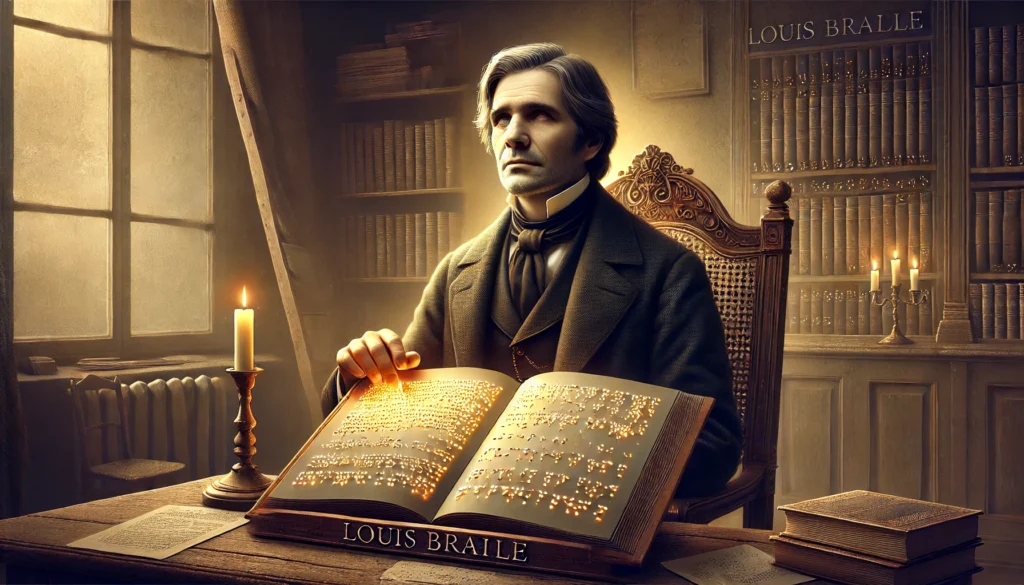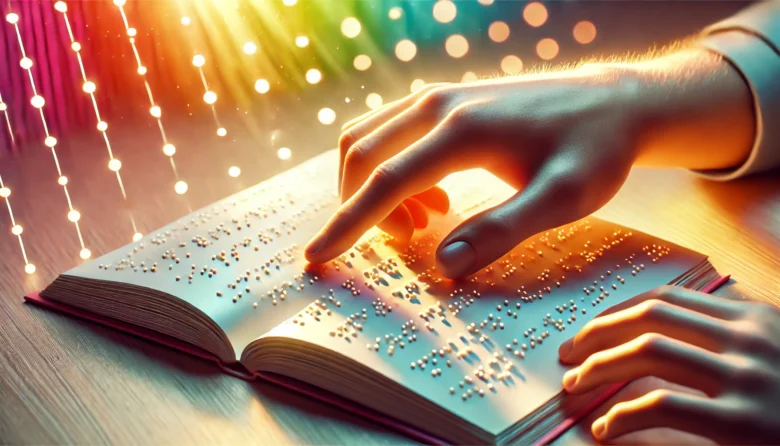Did you know that braille was inspired by a military communication system developed in the early 19th century? This intriguing fact is only a glimpse into the rich and compelling story of braille—a system that has revolutionized accessibility for visually impaired individuals worldwide. In this blog, we’ll explore the history, evolution, and impact of braille in a way that’s engaging, relatable, and inspiring.
The Origins of Braille
The journey of braille begins with Charles Barbier, a French military officer, who created “night writing” to help soldiers communicate silently and without light. Although his system wasn’t practical for military use, it laid the groundwork for Louis Braille, a young Frenchman who lost his sight due to an accident in childhood. Louis Braille refined Barbier’s idea into a more efficient system, debuting his version of Braille in 1824 when he was just 15 years old.
Louis Braille’s system used raised dots arranged in a six-dot cell, which could represent letters, numbers, and even musical notes. This ingenious approach transformed how visually impaired people accessed information, enabling them to read and write independently.
The Global Adoption of Braille
Despite its potential, braille faced resistance in its early years. Many educators and institutions were hesitant to adopt the system, favouring embossed letters or other methods that proved less effective. However, by the late 19th century, braille gained international recognition, becoming the standard writing system for blind individuals worldwide.

The standardization of braille in different languages was a monumental achievement. Braille was adapted to various linguistic scripts, from English and French to Mandarin and Arabic. This adaptability ensured that people across cultures could benefit from the system.
The Evolution of Braille Technology
As technology advanced, so did braille. The introduction of braille typewriters and embossers in the 20th century made it easier to produce braille documents. Organizations like Perkins School for the Blind, a pioneering institution in the U.S., played a crucial role in developing braille-writing devices like the Perkins Brailler.
Fast forward to the digital age, and braille technology has reached new heights. Refreshable braille displays—devices that use pins to create temporary braille text—have made digital content accessible to blind users. These displays work seamlessly with smartphones, tablets, and computers, ensuring inclusivity in an increasingly digital world.
Braille in Modern Society
Braille isn’t just about literacy—it’s a symbol of empowerment and inclusion. Public spaces now feature braille on elevators, ATMs, and signage, helping visually impaired individuals navigate independently. Companies like HumanWare, which develops assistive technologies, continue to innovate by integrating braille into modern devices.
Education has also seen significant strides. Specialized schools and resources ensure that visually impaired students can learn braille alongside their sighted peers. Stories of individuals like Haben Girma, the first deafblind graduate of Harvard Law School, demonstrate the life-changing potential of accessible education and braille literacy.
Challenges and the Road Ahead
Despite its success, challenges remain. Many visually impaired individuals still lack access to braille education due to socioeconomic barriers or a shortage of trained instructors. Moreover, as audio-based technology grows, some fear that reliance on braille may decline.
However, advocacy groups and organizations are working tirelessly to keep braille relevant. Campaigns promoting braille literacy emphasize that braille is not just an alternative but an essential tool for independence and empowerment.
Conclusion
The history and evolution of braille showcase the power of innovation, resilience, and inclusivity. From its humble beginnings as “night writing” to its role in today’s digital world, braille has transformed countless lives. As we continue to champion accessibility, let’s ensure that braille remains a cornerstone of inclusion for future generations.
What can you do to support braille literacy and accessibility? Share this blog, raise awareness, or consider donating to organizations that support visually impaired individuals. Together, we can make a difference.
Author’s Note
As someone passionate about accessibility and inclusion, I’ve always admired the transformative impact of braille. I hope this blog inspires you to learn more and contribute to a more inclusive world.
G.C., Ecosociosphere contributor.
References and Further Reading





Comments
What i do not understood is actually how you’re not really much more well-liked than you might be now. You’re very intelligent. You realize therefore significantly relating to this subject, made me personally consider it from so many varied angles. Its like men and women aren’t fascinated unless it is one thing to do with Lady gaga! Your own stuffs excellent. Always maintain it up!